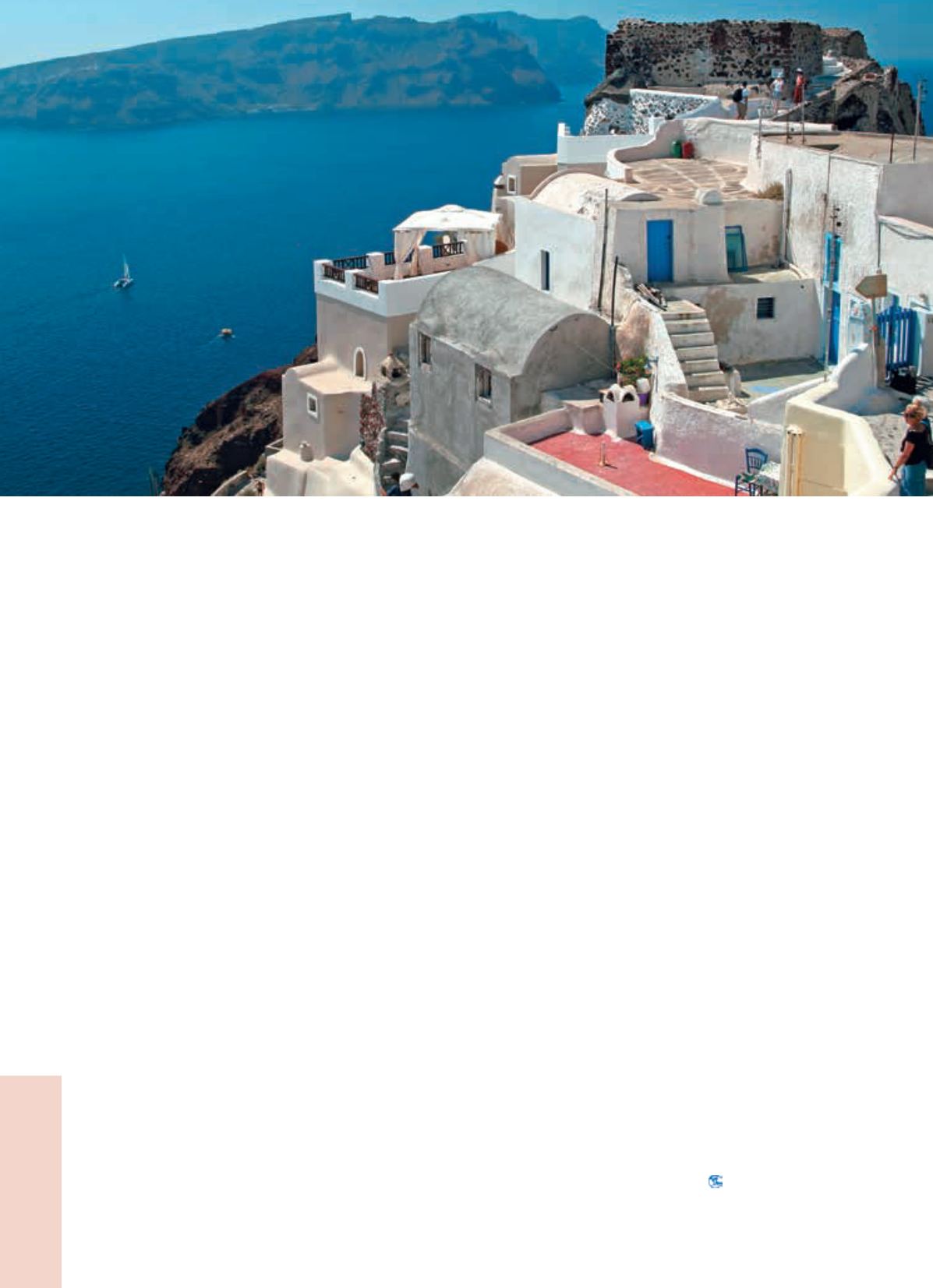
Tourism: Greece’s heavy industry
In Greece’s case, tourism is the most important
and safest “vehicle” for riding out the crisis.
For tourists-visitors, the birthplace of democracy,
philosophy and humanism may simply be a sunny
place with 15,000 kilometres of coastline (the
longest among Mediterranean countries) and a
rich history.
For the Greeks, though, who are suffering the
consequences of the recession for a fourth year
in a row, tourism may be the only sector that can
signal a return to positive growth rates, propelling
the entire economy towards revival. It is estimated
that tourist consumption affects 60% of the Greek
economy’s sectors.
According to a recent study by the Foundation for
Economic and Industrial Research (whose direc-
tor general was, until recently, the current Minister
of Finance, Yannis Stournaras), the contribution
of tourism to the Greek economy, based on 2010
data, amounts to
€
34.4 billion, accounting for
15.1% of Greece’s GDP. The importance of
tourism for the country is highlighted by the fact
that the direct impact from the development of
Greece’s tourist product is set at
€
15.2 billion.
Nonetheless, it has to be stressed that, given that
the country’s GDP shrank in 2011, while tourist
arrivals and revenues increased, the final contri-
bution may be higher.
It is worth noting that each
€
1,000 of tourist
expenditure increases the Greek economy’s
gross product by almost
€
2,200.
The estimates for 2013 point to an increase of vis-
itor numbers to 17 million from 16 million in 2012,
while the target of increasing revenues by
€
1 bil-
lion is considered feasible (in 2012 revenues
reached
€
10 billion).
That said, Greek tourism’s major bet is to reach
20 million arrivals, which translates in an addi-
tional 3% increase of total GDP. Until the year
2020 Greece’s aim is to increase direct and indi-
rect tourist gross added value to
€
50 billion,
adding 220,000 jobs.
And whereas real unemployment is expected to
climb to 35%, the growth of Greece’s “heavy
industry” in 2013 may become a powerful
weapon, since –based on 2011 data– the number
of workers directly employed in tourism stood at
311,000 (8% of total employment, based on pri-
mary employment). This figure is augmented if we
take into account the large number of persons
who work part-time in the provision of tourist serv-
ices, during peak seasons. In 2010, the number
of workers directly and indirectly employed in
tourism was estimated at 446,000, while the sec-
tor’s total effect on employment was estimated at
741,000 (one-sixth of total employment).
Thus, every 100 direct jobs in tourism support
another 130 jobs in sectors that supply tourist enter-
prises, as well as in sectors where the income gen-
erated (from direct and indirect employment) finds
its way as consumer spending. It should be noted
that in 2008, when tourist revenues increased by
3%, employment in tourism showed a similar
increase (2%). In contrast, the reduction of rev-
enues by 11% in 2009 caused a corresponding
drop of employment in tourism-related sectors.
Trade with Greece
114


